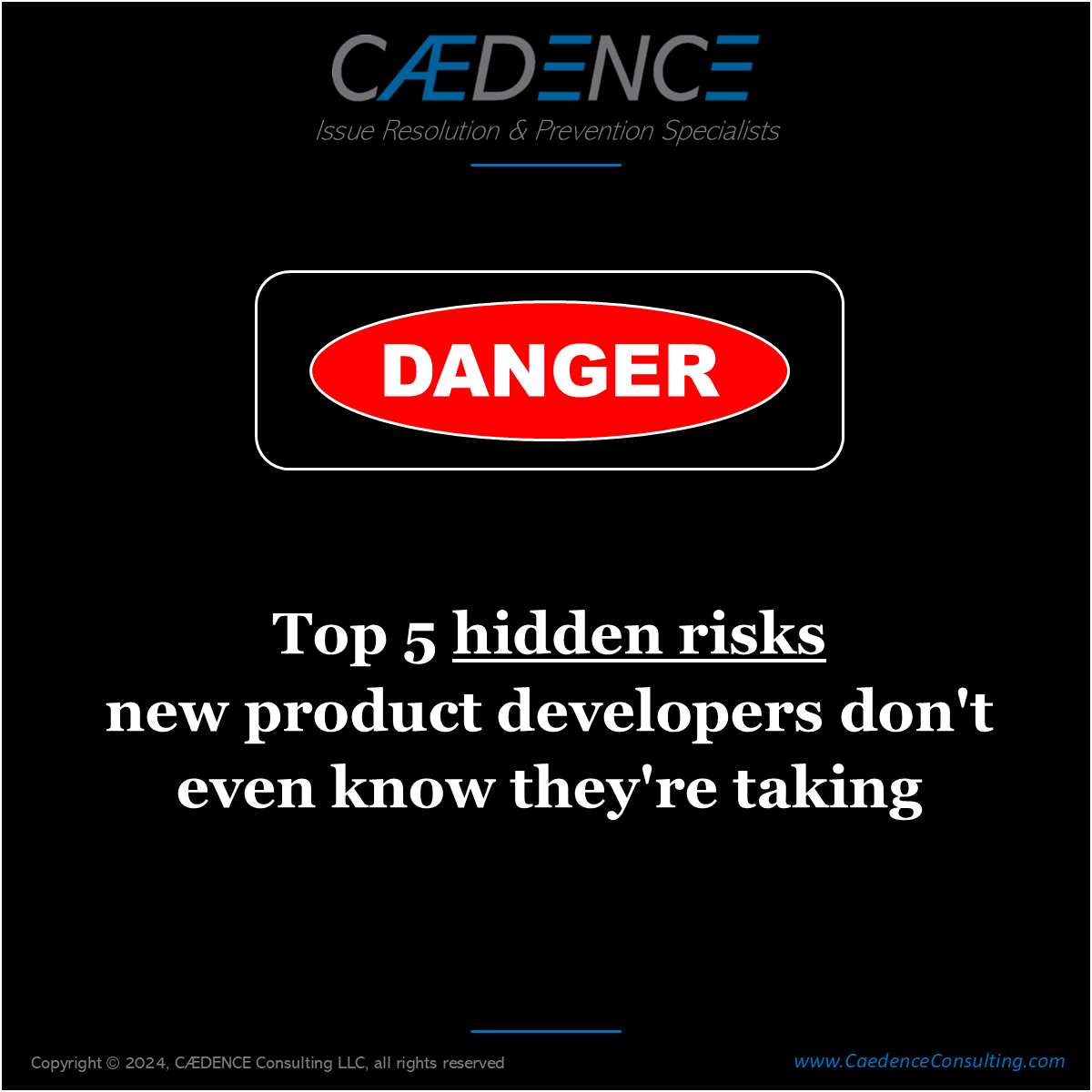What are the Top 5 Hidden Risks in New Product Development?

Many risks in NPD & NPI are visible. New process steps that must be implemented with caution and back-up plans. Unique product features that are challenging to accomplish. But there are other risks lurking. Things that can derail your project before you even realize.
5. Scope creep: You don't see it coming, but, little by little, each extra customer request adds up. Pretty soon you don't have enough resources and your launch schedule is in jeopardy.
4. Innovation: The further you stray from what's been done before, the higher the chance of failure. It might still be worth doing, but you've got to take precautions to avoid disaster.
3. Supply chain: Can the vendors of your key components really do what they promised when they promised? How do you really know?
2. Overoptimism: Developing and launching something new requires a certain amount of optimism - you've got to believe in what you're doing. However, too many teams put on rose-tinted glasses and ignore red flags during the development process. Consequences of this behavior can be catastrophic.
1. Cognitive Biases and Logical Fallacies: Clear headedness is your greatest ally in product development. However, even the smartest people are susceptible to flawed thinking that can derail a project. Here are some resources to help you recognize when faulty thinking is happening (in yourself and others):
https://yourlogicalfallacyis.com/
https://yourbias.is/
A bit nervous now? You should be! But, don't worry. Let CAEDENCE introduce you to a systematic approach and toolkit for managing and reducing risk in new product development and introduction.

Over the years we’ve been exposed to Six Sigma, Juran, Deming PDCA, 8D, Dale Carnegie, A3, Shainin, and more. Each technique works pretty well, and has been demonstrated many times in a wide variety of industries and circumstances. At the core they are all essentially the same!
Each approach relies on an underlying logical flow that goes like this: [a] make sure the problem is clearly defined; [b] be open to all sources of information; [c] vet the information for relevance and accuracy; [d] use the process of elimination to narrow down all possible causes to the most likely few; [e] prove which of the suspects is really the cause of the issue; [f] generate a number of potential solutions; [g] evaluate the effectiveness, feasibility and risk of the potential solutions; [h] implement the winning solution(s); and [i] take steps to make sure your solution(s) don’t unravel in the future.
The differences between the paradigms resides in supplementary steps and toolkits. For example, 8D contains the important “In









